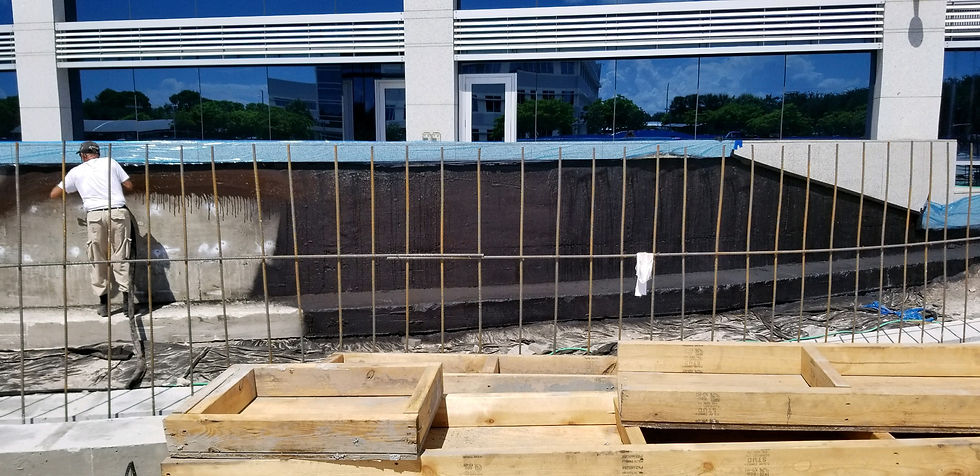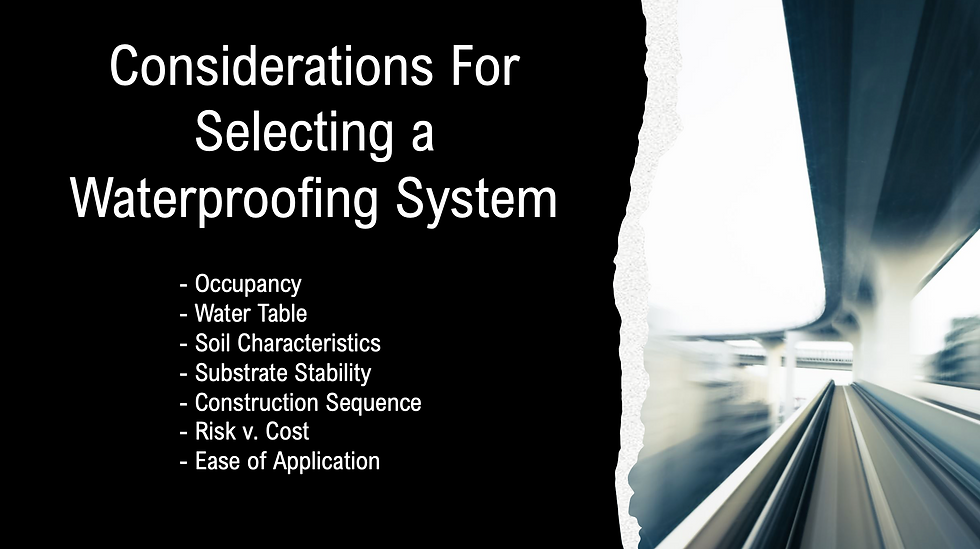Waterproofing Membranes: What is a Waterproofing Membrane?
- Innovative Waterproofing Solutions

- Aug 25, 2020
- 3 min read
Many often ask what is required for waterproofing. A common solution is a waterproofing membrane. A waterproofing membrane is a layer of water-tight material that is spread over a surface. This layer is often continuous (and preferably seamless) and does not allow water to pass through it.
For example, on a flat surface such as a terrace or balcony, a waterproofing membrane could be applied above the structural slab and below the finish tiles. This will ensure that water does not make its way into the structural slab, potentially causing damage. These membranes are composed of layers of waterproof material. Most are about 20 to 100 mils thick. There are 2 main types of membranes, sheet based membranes and liquid applied membranes. Ideally, a waterproofing membrane should be strong, flexible, tear-resistant, and elastic so that it can stretch to cover cracks and also move with the building. If the membrane is to be exposed to the sun, then it should be UV resistant or covered by something to prevent it from damage caused by sun exposure. The membrane should be flexible enough to take any shape it is laid over, and be capable of turning up and over walls and other construction features. This is an area where a liquid applied membrane is advantageous.
SHEET BASED WATERPROOFING MEMBRANES

Sheet membranes typically come in the form of rolls and have to be spread over the surface carefully to prevent bunching or creasing. The most common type of sheet based membrane is a bituminous waterproofing membrane. This type of membrane is stuck to the substrate with a hot tar based adhesive using blowtorches. There are also PVC or plastic based membranes that are chemically adhered or mechanically fastened. With this type of membrane, joints between sheets are critical, and must be done perfectly to avoid leakage. Since these membranes are factory-produced excepting the joints, they are consistent in quality.
LIQUID APPLIED WATERPROOFING MEMBRANES

Liquid applied membranes come to the site in liquid form, which are then either sprayed or brush-applied on the surface. The liquid cures in the air to form a seamless, joint-free membrane. The thickness can be controlled by applying more of the liquid chemical per unit area. Since the application procedure is very quick, a contractor will try and finish the entire area, however, if a very large area is to be done on successive days, cold joints can easily be done by overlapping the new membrane over the old - the chemical will stick to itself readily. These are generally considered to be superior to sheet based membranes as they are joint-free. However care must be taken in application to provide just the right thickness. The membrane can tear or break if it is too thin. The adhesion of the membrane to concrete must be good.
A product such as IWS Water Proof, is superior due to its asphaltic rubber composition, making it both water tight and flexible.
Tear resistance is an important property, as many membranes that have good elongation also can tear easily. Take a small sample of the material in your hand, and try and tear it into two pieces. This gives a fair idea of its tear resistance. You are looking for a membrane that will not tear even if a reasonable force is exerted on it.
If a membrane has to be installed over a complicated shape, such as the junction of a column and beam, then a liquid applied membrane is preferable, as it can be applied to any type of underlying shape or structure. A sheet membrane would form folds and creases and leave gaps between the underlay and membrane.
WHERE ARE MEMBRANES USED?
Membranes can be used in the following parts of a building:
over terrace slabs and balconies
in showers
underneath and around basements
in concrete water tanks (use a food safe membrane)
in swimming pools
over landscaped concrete decks, between the soil and concrete
in gutters







Comments